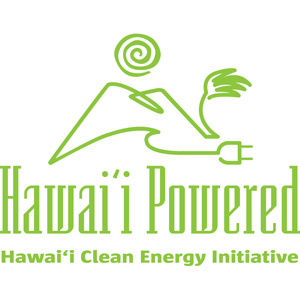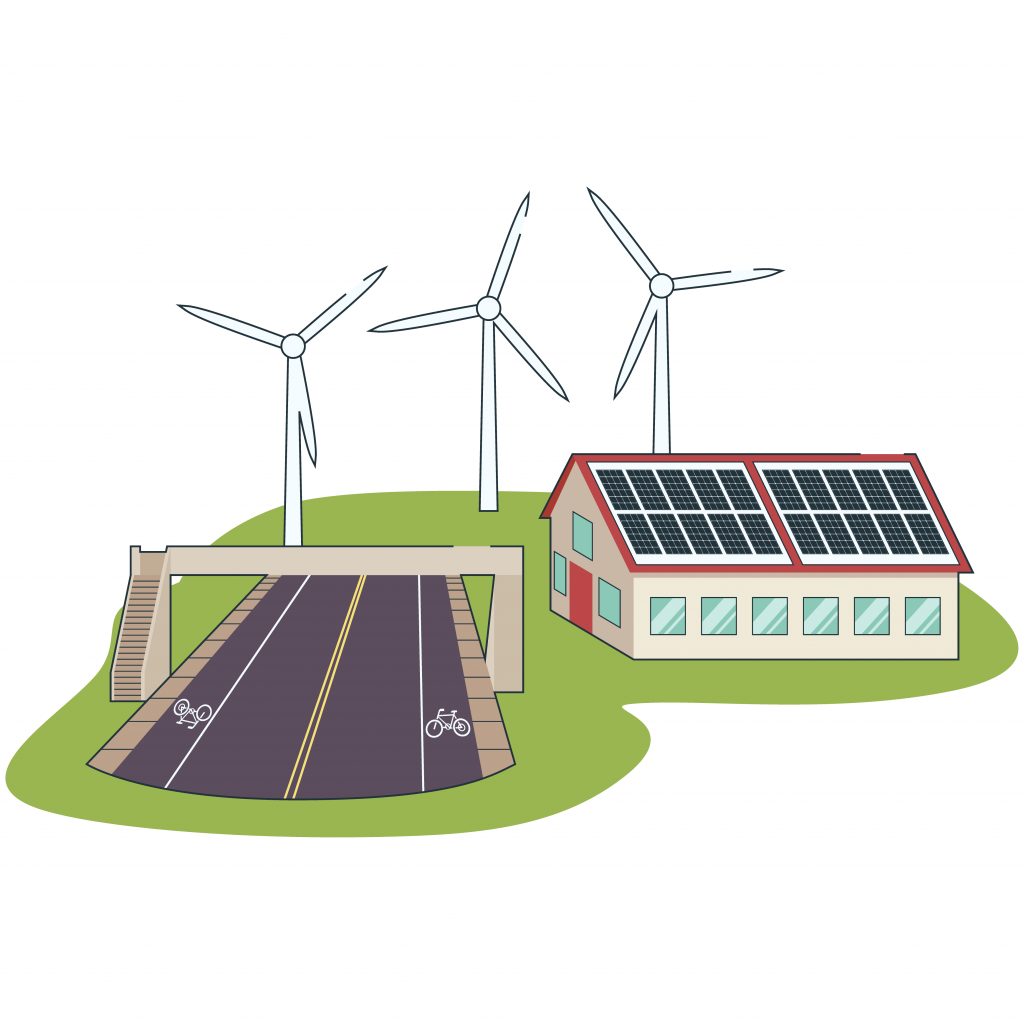- Home
- Critical Decade
- HI Climate Action
- HI Commission
- HI Resources
- HI Equity
- HI Events
Goals and Progress
WHAT ARE YOU WAITING FOR?
 Increasing Ambition. The upcoming COP26, considered one of the most influential since the Paris Agreement in 2015, is a venue for the US states to help ratchet up ambition. According to The Climate Group, 55% of states and regions with a 2030 emissions reduction target are showing greater ambition than their national counterparts. Massachusetts, Nevada, New York, California, Hawaiʻi, Washington, Virginia, Oregon, and Maine have all passed legislation to get to 100% carbon-free electricity by at least 2050, something the federal Congress has yet to do.
Increasing Ambition. The upcoming COP26, considered one of the most influential since the Paris Agreement in 2015, is a venue for the US states to help ratchet up ambition. According to The Climate Group, 55% of states and regions with a 2030 emissions reduction target are showing greater ambition than their national counterparts. Massachusetts, Nevada, New York, California, Hawaiʻi, Washington, Virginia, Oregon, and Maine have all passed legislation to get to 100% carbon-free electricity by at least 2050, something the federal Congress has yet to do.
Staying true to form, Hawaiʻi is doing what it did with its 100 percent renewable by 2045, and sub zero emissions target (to sequester more than emitted), Hawaiʻi is the first state to declare a climate emergency (SCR 44) this year.
Hawaiʻi, as part of the 25-governor US Climate Alliance, is doing its bit and putting forth its own High Impact Actions that will be the next generation of actions to limit warming to 1.5 degrees.
Here, you can see the HI Impact Actions that Hawaiʻi has committed to, and being taken by Hawaiʻi’s climate commission and its individual members. Such action is being undertaken under the framework of impactful climate legislation at home, and commitments announced for COP26.
HAWAIʻI’S HIGH IMPACT ACTIONS
 As part of the 25-governor US Climate Alliance, Hawaiʻi has committed to specific and new High-Impact Actions that will accelerate greenhouse gas emission reductions and drive the real, impactful implementation and results needed to make the US climate targets a reality.
As part of the 25-governor US Climate Alliance, Hawaiʻi has committed to specific and new High-Impact Actions that will accelerate greenhouse gas emission reductions and drive the real, impactful implementation and results needed to make the US climate targets a reality.
These priority areas include Power, Buildings, Industry, Transportation, Just Transition and Equity, Resilience, Natural and Working Lands, and the Social Cost of Greenhouse Gases.
These new High-Impact Actions build and expand on years of increasingly bold and ambitious commitments and actions from all of the Alliance’s states.
See below to see what Hawaiʻi has committed to progress towards a Climate Ready Hawaiʻi.
- 100% net-zero operating emissions government buildings by 2030.
- 100% ZEV new light-duty sales by 2035.
- 100% zero-emission light-duty public fleets by 2035.
- 100% zero-emission public/government-owned transit bus fleets by 2030.
- 100% zero-emission med- & heavy-duty public fleets by 2040, where technically feasible.
- Promote sustainable communities that provide a range of affordable housing and transportation options that increase access to opportunity and reduce vehicle miles travelled (VMT).
- Empower disadvantaged communities and foster leadership to develop climate/clean energy solutions and policies through training, facilitation, and funding.
- Commit to a just transition that provides for sustainable livelihoods for those reliant on the fossil fuel economy in the shift to more sustainable systems and practices.
- Integrate racial and gender diversity in developing environmental solutions to the climate crisis
- Conserve at least 30% of land and coastal waters by 2030.
- Commit to large scale restoration of forests and other locally indigenous ecosystems.
- Increase tree canopy in disadvantaged and/or heat vulnerable communities by at least 40% by 2030 to mitigate urban heat island effects.
- Increase consumption of food produced within the jurisdiction to at least 20-30% of food consumed by 2030.
- Consider utilizing the social cost of GHG emissions across relevant policy-making and decision-making processes
- Explore the adoption of zero-emission standards for space and water heating equipment.
- Explore the adoption of Building Performance Standards like those enacted in Colorado, Maryland, Oregon, and Washington.
- Explore the adoption of clean heat standards like those enacted in Colorado and Vermont.
- Take actions to align building sector utility resource planning and procurement policies with state climate goals.
- Join the U.S. Department of Energy’s Better Climate Challenge, committing to reduce scope 1 and 2 emissions from state facilities by at least 50 percent in the next 10 years.
HAWAIʻI’S MITIGATION GOALS

HAWAIʻI’S GREENHOUSE GAS INVENTORY
The Department of Health has established the Hawaiʻi Greenhouse Gas (GHG) Program to combat the threat of climate change and sea level rise. The program utilizes the Air Pollution Control Permit process of the Clean Air Branch to regulate GHG emissions statewide. The Hawaiʻi GHG program works in conjunction with other Federal and Hawaii State programs to mitigate GHGs. You can find their latest Hawaiʻi Greenhouse Gas Emissions Report for 2017 here.

ALOHA+ DASHBOARD
The Aloha+ Challenge is a statewide public-private commitment to achieve Hawai‘i’s social, economic, and environmental goals by 2030. Launched in 2014, the Aloha+ Challenge identified six priority goals and local metrics that are delivering against the global United Nations Sustainable Development Goals (SDGs). The Hawai‘i Green Growth Local 2030 Hub and partners are catalyzing island-led solutions to drive concrete action. Visit the Aloha+ Dashboard to see statewide progress and benchmark data on the Aloha+ SDGs and Hawai‘i’s contribution to the global goals.

GREENHOUSE GAS SEQUESTRATION TASKFORCE
Through the State’s Hawaiʻi Climate Change Mitigation and Adaptation Commission, and its partners like the Greenhouse Gas Sequestration Taskforce, Hawaiʻi aims to achieve 100 percent renewable energy and carbon neutrality by 2045.

HAWAIʻI CLEAN ENERGY INITIATIVE
Hawai‘i is a leader in climate change and renewable energy goals. It established its loyalty to the Paris Agreement in 2017 through Act 32, but the Hawai‘i Clean Energy Initiative dates back to 2008. The goal of the Hawaiʻi Clean Energy Initiative is to achieve 100 percent clean energy by 2045.

HAWAIʻI CLIMATE COMMISSION STATEMENT ON GROUND TRANSPORTATION EMISSIONS REDUCTION
The Commission’s statement on ground transportation emissions reduction on climate mitigation urges the State to take urgent action by focusing on reducing emissions from the ground transportation sector.
See all the mitigation ideas, concepts, and projects the Commission has investigated/considered by clicking here.
JUMP TO: HI MITIGATION | MITIGATION STRATEGIES | SEQUESTRATION | MITIGATION REPORTS
